Judi Lynn
Judi Lynn's JournalRoads, farming threaten Ecuador 'lost city' complex
FEBRUARY 13, 2024
by Paola LÓPEZ

The extent of what is now believed to be the largest and oldest network of pre-Hispanic cities was first unveiled in 2023 after a project scanning the area with laser-mapping techonology from above.
Shielded by the jungle for hundreds of years, the remains of a massive 2,500-year-old network of Ecuadoran cities are being threatened by road and farm encroachment just as its long-held secrets are being revealed, researchers say.
Traces of an Amazonian "lost city" were first discovered in 1978, but the full extent of what is now believed to be the largest and oldest such urban expanse were only revealed last year with the help of laser mapping.
The vast site, which covers more than 1,000 square kilometers (385 square miles), lies deep in the Upano valley on the foothills of the Andes mountain range in eastern Ecuador.
It consists of ancient settlements of different sizes, connected by what researchers describe as a complex system of roads.
Archaeologists have also identified some 7,400 mounds in various shapes, made by human hands millennia ago.
. . .
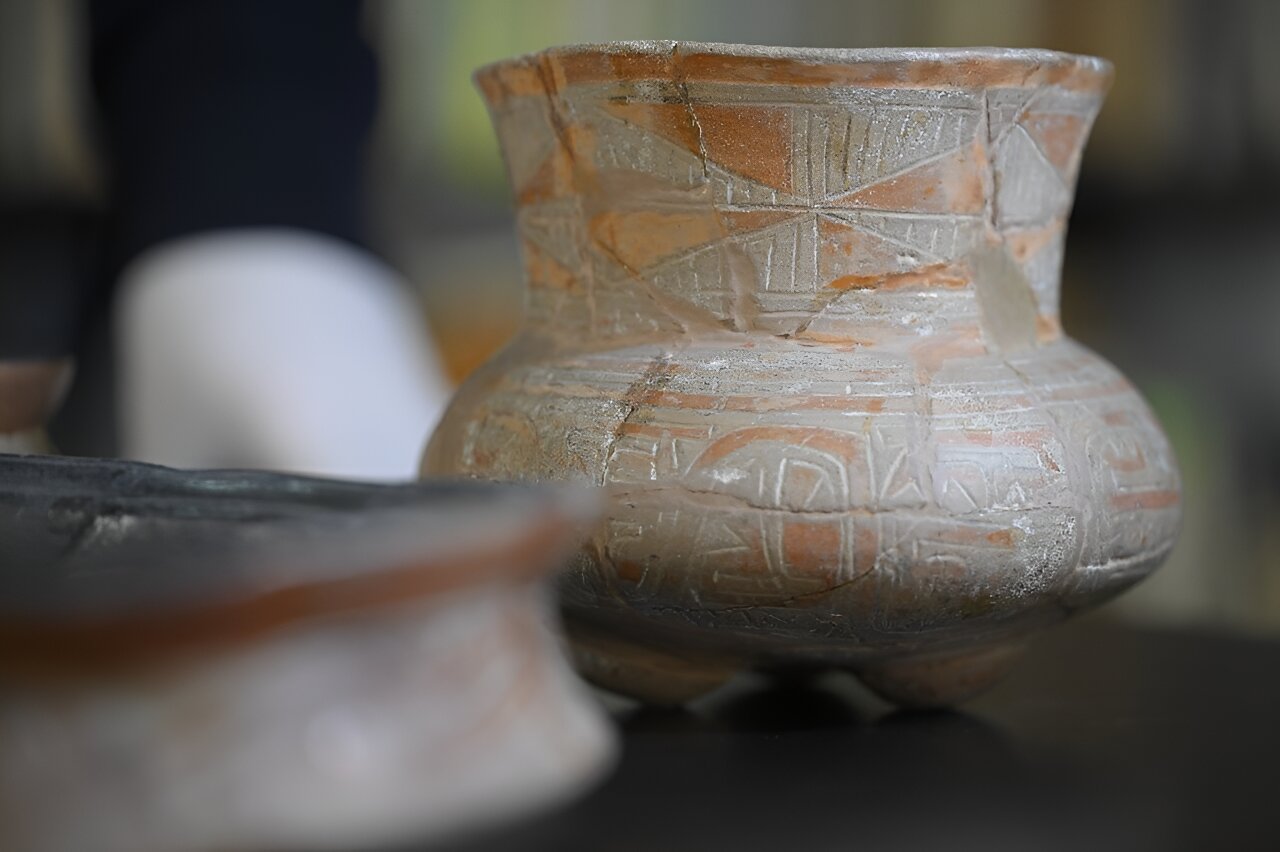
Intricately designed items have been found at the site of the ancient settlements in recent decades.
More:
https://phys.org/news/2024-02-roads-farming-threaten-ecuador-lost.html
Washington Promotes Opposition Candidate Setting the Stage for Delegitimizing the Venezuelan Presidential Election
FEBRUARY 13, 2024
BY ROGER HARRIS

Photo by Bel Pedrosa – CC BY-SA 2.0
Venezuela’s Bolivarian Revolution marks its 25th anniversary this month, despite continuous US-led hybrid warfare to overthrow the socialist project. The Venezuelan government of President Nicolás Maduro has successfully forced the US to de facto engage with it, although Washington still maintains the fiction that the defunct 2015 National Assembly is the “last remaining democratic institution” there.
The US has been relegated to vetting candidates for the upcoming Venezuelan presidential election. While still egregiously interventionist, the imperial power has failed to achieve outright regime change. The appearance of Venezuelan opposition politician Maria Corina Machado before a US congressional committee is the latest in the empire’s quest for a trustworthy confederate. Hopes are high among Republicans that she is the right collaborator. The Democrats may have another but complementary game plan.
The opposition to the ruling Venezuelan socialist government is composed of many small and fractious sects, usually associated with a dominant personality, such as Machado’s Vente Venezuela party. The US spends millions each year meddling in the internal affairs of Venezuela in what it euphemistically calls “democracy promotion.” USAID alone pledged $50M to “push” the presidential elections, scheduled for later this year.
Washington’s efforts to force a unified opposition have been so far unsuccessful in Venezuela. But that has not deterred the Yankees from imperiously vetting the candidate they think ought be Venezuela’s leader.
Farewell to Venezuelan “interim president” Juan Guaidó
The last contender for the role of the empire’s factotum was the now disgraced Juan Guaidó. Despite his popularity abroad as the “interim president” of Venezuela, the hapless security asset was not as well received at home and was dismissed by his own opposition bloc in 2022.
More:
https://www.counterpunch.org/2024/02/13/washington-promotes-opposition-candidate-setting-the-stage-for-delegitimizing-the-venezuelan-presidential-election/
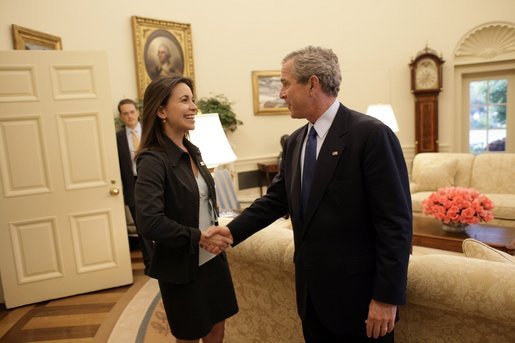

Maria Corina Machado, as George W.'s guest of honor in Washington, visiting during the Presidency of Hugo Chavez, the Venezuelan progressive the U.S. hard right despised due to his work to raise the standard of living of the massive Venezuelan poor, and start expecting wildly predatory, exploitative US-based oil corporations which had been given monstrous sweetheart arrangements with the Venezuelan oligarchs and pay only a pittance of the appropriate tax base. Chavez became #1 public enemy the moment he started looking out for the interests of the poor, establishing schools for, heaven forbid, poor children, sending in teachers into neighborhood to start teaching the parents to read, setting up food kitchens, bringing in doctors who would actually treat poor people, unlike the home grown snots who wouldn't touch the poor with ten foot poles, etc., etc., etc.
Marina Corina Machado has always operated her own "non-profit" (you bet) operation of pro-Washington politicians who wage continual war on whatever progressive people are elected, while getting paid handsomely by the U.S. Congress.

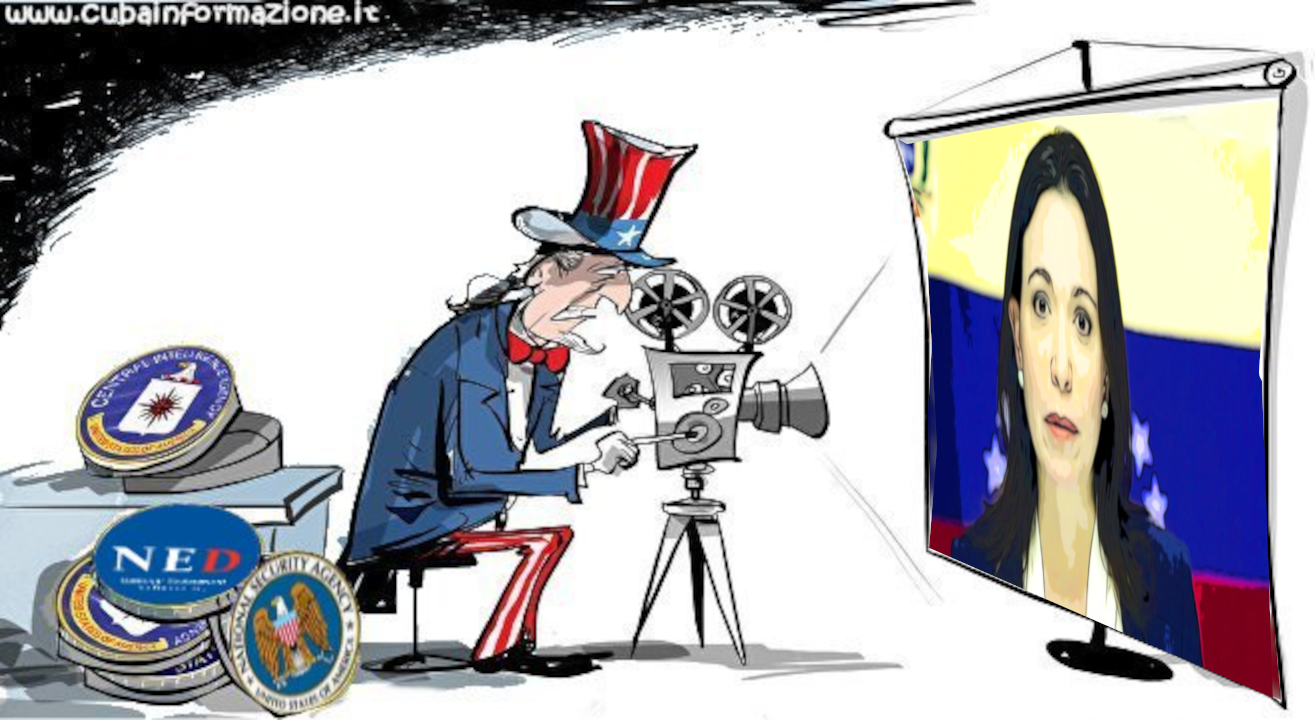


She probably smells like Donald J. Trump. too!
Amazon Deforestation Is Falling Under Brazil's New President -- but Is It Too Late?
Lula is much, much better for the environment. But can he reverse Bolsonaro’s damage?
Sun February 11th, 2024
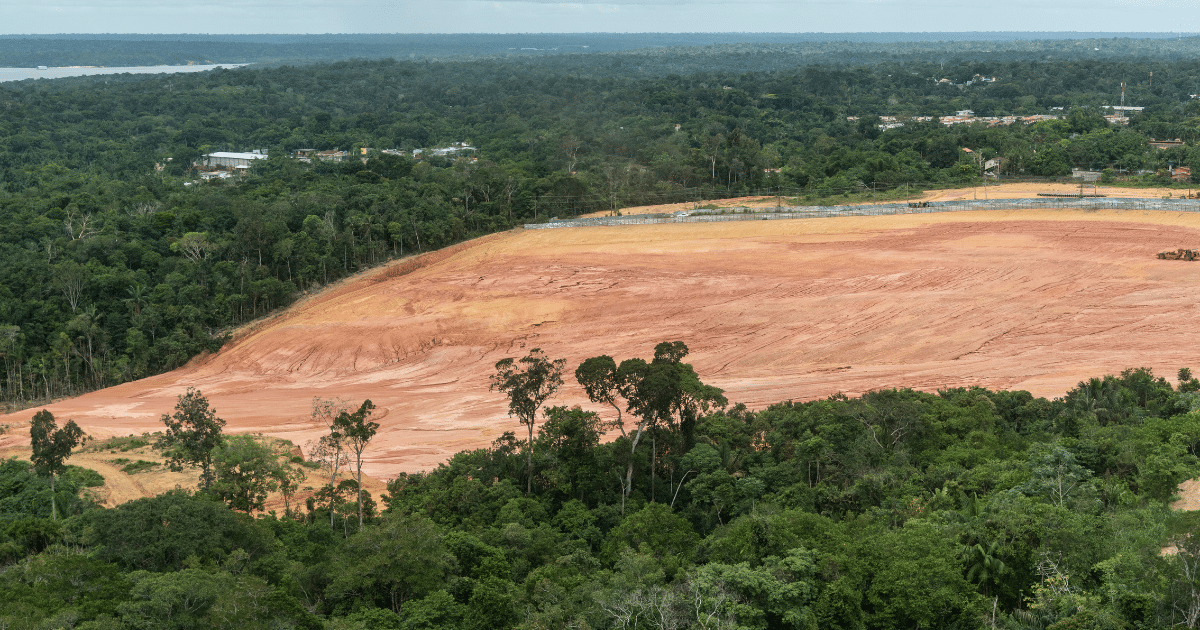
The Amazon rainforest is one of the most biodiverse regions on the planet, and plays a crucial role in maintaining Earth’s ecosystem. It’s also being slowly destroyed from within by cattle farmers, loggers, corporations and others who wish to develop the land for other purposes. But Brazil’s new president Luiz Inácio Lula da Silva is decidedly against this development, and new data shows that Amazon deforestation is falling dramatically under Lula.
When anti-environmentalist Jair Bolsonaro assumed the Brazilian presidency in 2019, he gave developers free rein of the Amazon rainforest, 60 percent of which is in Brazil. This, along with other policy decisions, led to a staggering increase in deforestation, alarming environmentalists and climate scientists around the world. By 2021, scientists were shocked to discover that some parts of the Amazon had been so overdeveloped that they now emit more carbon than they store.
But in 2022, Bolsonaro lost reelection to Lula, a former two-term president himself who’d overseen dramatic reductions in deforestation during his earlier administrations. Lula pledged to crack down on deforestation in the Amazon rainforest once again, and after his first year in office, he’s made good on that promise.
Why Does the Amazon Rainforest Matter?
The Short Answer:
The Amazon captures enormous amounts of carbon dioxide from the atmosphere and is one of the most biodiverse areas on Earth. It’s also home to millions of Indigenous people and several species who don’t live anywhere else.
The Longer Answer:
The Amazon rainforest, simply by existing in its natural state, plays a crucial role in fighting climate change. That’s because it’s traditionally been one of the world’s biggest carbon sinks, meaning it absorbs and sequesters more carbon dioxide from the atmosphere than it emits. Carbon dioxide makes up more than three-quarters of all greenhouse gasses, which makes carbon sinks like the Amazon an invaluable tool in the fight against global warming.
In addition to sequestering carbon on a massive scale, the Amazon is also one of the most biodiverse places on Earth. An extraordinary array of plant and animal species call the Amazon their home — over three million, to be exact, including 2,500 species of tree and more species of primate than anywhere else. Some animals, such as the gray wooly monkey and the giant otter, are only found in the Amazon.
More:
https://sentientmedia.org/amazon-deforestation-brazils-new-president/
After Police Kill Unarmed Black People, Black Americans Lose Sleep, Study Finds
New research draws a link between unequal exposure to police violence and lack of sleep for Black adults
Will Sullivan
Daily Correspondent
February 7, 2024
In the months following news of police officers killing unarmed Black people in the United States, Black adults are more likely to experience shorter nights of sleep than before, according to a new study. Researchers did not find a similar trend for white Americans.
The findings, published Monday in the journal JAMA Internal Medicine, “underscore the role of structural racism in shaping racial disparities in sleep health outcomes,” the authors write.
“Society needs to pay attention to the way in which racial trauma really impacts the emotional, mental and physical well-being of Black people and any persons of color—any person that’s marginalized,” Christiana Awosan, the program director for marriage and family therapy at Iona University, who did not contribute to the findings, tells NBC News’ Claretta Bellamy.
The findings reflect “the general human tendency to interpret events—and disparities in events—in ways that apply to you, and your future, and your family’s future,” Atheendar Venkataramani, a co-author of the study and health economist at the University of Pennsylvania, tells the New York Times’ Emily Baumgaertner.
More:
https://www.smithsonianmag.com/smart-news/after-police-kill-unarmed-black-people-black-americans-lose-sleep-study-finds-180983751/
Message to stop illegal mining in Indigenous lands on display at Brazil's carnival
By Diane Jeantet & Fabiano Maisonnave | News | February 12th 2024

Performers from the Salgueiro samba school parade during Carnival celebrations at the Sambadrome in Rio de Janeiro, Brazil, on Monday, Feb. 12, 2024. (AP Photo/Silvia Izquierdo)
Carnival dancers took the biggest stage in Rio de Janeiro on Sunday night with their faces painted red in a traditional Indigenous manner, while percussionists had “Miners out” written across the skins of their drums.
It was part of Salgueiro's samba school's tribute to the Yanomami, Brazil’s largest Indigenous group, with its giant floats, costumes and songs based on the group’s ancient culture and traditions.
“My Salgueiro is the arrow for the people of the forest,” the parade participants sang out as they marched through the Sambadrome, delivering their message to more than 70,000 revelers at the Sambadrome and millions watching live on television. “The chance that’s left for us is an Indigenous Brazil.”
President Luiz Inácio Lula da Silva is under pressure to deliver on promises to eradicate illegal mining, particularly amid a recent backslide in efforts. Sunday’s parade comes as Brazil celebrates one year since Lula declared a public health emergency for the Yanomami people in the Amazon, who are suffering from malnutrition and diseases such as malaria as a consequence of illegal mining.
More:
https://www.nationalobserver.com/2024/02/12/news/message-stop-illegal-mining-indigenous-lands-brazil-carnival
Who got the anti-Guatemalans propaganda underway which continues to this day? Edward Bernays, Sigmund Freud's nephew.
Edward BernaysEdward Louis Bernays (/bɜːrˈneɪz/ bur-NAYZ, German: [bɛʁˈnaɪs]; November 22, 1891 ? March 9, 1995) was an American pioneer in the field of public relations and propaganda, and referred to in his obituary as "the father of public relations".[3] His best-known campaigns include a 1929 effort to promote female smoking by branding cigarettes as feminist "Torches of Freedom", and his work for the United Fruit Company in the 1950s, connected with the CIA-orchestrated overthrow of the democratically elected Guatemalan government in 1954. He worked for dozens of major American corporations, including Procter & Gamble and General Electric, and for government agencies, politicians, and nonprofit organizations.
The State Department created a team of diplomats who would support PBSuccess. It was led by John Peurifoy, who took over as Ambassador to Guatemala in October 1953.[89][90] Another member of the team was William D. Pawley, a wealthy businessman and diplomat with extensive knowledge of the aviation industry.[91] Peurifoy was a militant anti-communist, and had proven his willingness to work with the CIA during his time as United States Ambassador to Greece.[92] Under Peurifoy's tenure, relations with the Guatemalan government soured further, although those with the Guatemalan military improved. In a report to John Dulles, Peurifoy stated that he was "definitely convinced that if [Árbenz] is not a communist, then he will certainly do until one comes along".[93] Within the CIA, the operation was headed by Deputy Director of Plans Frank Wisner. The field commander selected by Wisner was former U.S. Army Colonel Albert Haney, then chief of the CIA station in South Korea. Haney reported directly to Wisner, thereby separating PBSuccess from the CIA's Latin American division, a decision which created some tension within the agency.[94] Haney decided to establish headquarters in a concealed office complex in Opa-locka, Florida.[95] Codenamed "Lincoln", it became the nerve center of operation PBSuccess.[96]
The CIA operation was complicated by a premature coup on 29 March 1953, with a futile raid against the army garrison at Salamá, in the central Guatemalan department of Baja Verapaz. The rebellion was swiftly crushed, and a number of participants were arrested. Several CIA agents and allies were imprisoned, weakening the coup effort. Thus the CIA came to rely more heavily on the Guatemalan exile groups and their anti-democratic allies in Guatemala.[97] The CIA considered several candidates to lead the coup. Miguel Ydígoras Fuentes, the conservative candidate who had lost the 1950 election to Árbenz, held favor with the Guatemalan opposition but was rejected for his role in the Ubico regime, as well as his European appearance, which was unlikely to appeal to the majority mixed-race mestizo population.[98] Another popular candidate was the coffee planter Juan Córdova Cerna, who had briefly served in Arévalo's cabinet before becoming the legal adviser to the UFC. The death of his son in an anti-government uprising in 1950 turned him against the government, and he had planned the unsuccessful Salamá coup in 1953 before fleeing to join Castillo Armas in exile. Although his status as a civilian gave him an advantage over Castillo Armas, he was diagnosed with throat cancer in 1954, taking him out of the reckoning.[99] Thus it was Castillo Armas, in exile since the failed 1949 coup and on the CIA's payroll since the aborted PBFortune in 1951, who was to lead the coming coup.[65]
Castillo Armas was given enough money to recruit a small force of mercenaries from among Guatemalan exiles and the populations of nearby countries. This band was called the Army of Liberation. The CIA established training camps in Nicaragua and Honduras and supplied them with weapons as well as several bombers. The U.S. signed military agreements with both those countries prior to the invasion of Guatemala, allowing it to move heavier arms freely.[100] The CIA trained at least 1,725 foreign guerillas plus thousands of additional militants as reserves.[101] These preparations were only superficially covert: the CIA intended Árbenz to find out about them, as a part of its plan to convince the Guatemalan people that the overthrow of Árbenz was a fait accompli. Additionally, the CIA made covert contact with a number of church leaders throughout the Guatemalan countryside, and persuaded them to incorporate anti-government messages into their sermons.[100]
More:
https://en.wikipedia.org/wiki/Edward_Bernays#Family_and_education
US school children have never been taught actual facts regarding Latin America, source of many US immigrants:
Intense background of Guatemala since 1954, during Dwight Eisenhower's Presidency:
The 1954 Guatemalan coup d'état (Golpe de Estado en Guatemala de 1954) was the result of a CIA covert operation code-named PBSuccess. It deposed the democratically elected Guatemalan President Jacobo Árbenz and ended the Guatemalan Revolution of 1944–1954. It installed the military dictatorship of Carlos Castillo Armas, the first in a series of U.S.-backed authoritarian rulers in Guatemala.
The Guatemalan Revolution began in 1944, after a popular uprising toppled the military dictatorship of Jorge Ubico. Juan José Arévalo was elected president in Guatemala's first democratic election. He introduced a minimum wage and near-universal suffrage. Arévalo was succeeded in 1951 by Árbenz, who instituted land reforms which granted property to landless peasants.[1] The Guatemalan Revolution was disliked by the U.S. federal government, which was predisposed during the Cold War to see it as communist. This perception grew after Árbenz had been elected and formally legalized the communist Guatemalan Party of Labour. The United Fruit Company (UFC), whose highly profitable business had been affected by the softening of exploitative labor practices in Guatemala, engaged in an influential lobbying campaign to persuade the U.S. to overthrow the Guatemalan government. U.S. President Harry Truman authorized Operation PBFortune to topple Árbenz in 1952, which was a precursor to PBSuccess.
Dwight D. Eisenhower was elected U.S. president in 1952, promising to take a harder line against communism, and his staff members John Foster Dulles and Allen Dulles had significant links to the United Fruit Company. The U.S. federal government drew exaggerated conclusions about the extent of communist influence among Árbenz's advisers, and Eisenhower authorized the CIA to carry out Operation PBSuccess in August 1953. The CIA armed, funded, and trained a force of 480 men led by Carlos Castillo Armas. After U.S. efforts to criticize and isolate Guatemala internationally, Armas' force invaded Guatemala on 18 June 1954, backed by a heavy campaign of psychological warfare, as well as air bombings of Guatemala City and a naval blockade.
The invasion force fared poorly militarily, and most of its offensives were defeated. However, psychological warfare and the fear of a U.S. invasion intimidated the Guatemalan Army, which eventually refused to fight. Árbenz unsuccessfully attempted to arm civilians to resist the invasion, before resigning on 27 June. Castillo Armas became president ten days later, following negotiations in San Salvador. Described as the definitive deathblow to democracy in Guatemala, the coup was widely criticized internationally, and strengthened the long-lasting anti-U.S. sentiment in Latin America. Attempting to justify the coup, the CIA launched Operation PBHistory, which sought evidence of Soviet influence in Guatemala among documents from the Árbenz era, but found none. Castillo Armas quickly assumed dictatorial powers, banning opposition parties, imprisoning and torturing political opponents, and reversing the social reforms of the revolution. Nearly four decades of civil war followed, as leftist guerrillas fought the series of U.S.-backed authoritarian regimes whose brutalities include a genocide of the Maya peoples.
More:
https://en.wikipedia.org/wiki/1954_Guatemalan_coup_d%27%C3%A9tat#Aftermath
From a bloody past to a troubled present, Delaware's Guatemalans seek a brighter future with new President Bernardo Arv
Guatemalans in Newark and Georgetown are hopeful for positive change back home with the election of a new leader.
By Johnny Perez-Gonzalez
February 11, 2024
Thousands have fled Guatemala over the past 60 years, hoping to escape a civil war that lasted from 1960 to 1996. The following years saw rising violence, civil unrest and pervasive poverty.
Over the course of the 36-year-long war, more than 200,000 Guatemalans were killed or disappeared. Indigenous Maya made up 83% of that number of casualties. The U.S.-backed Guatemalan army’s destruction of more than 600 villages further deepens the scars of the country’s history.
Many of those who fled the violence ended up in Delaware. Guatemalans make up the second-largest segment of Latino residents in the state.
Last month, Guatemala’s new President Bernardo Arévalo took office, after promising to battle corruption. With new leadership, what do Delaware’s Guatemalan residents hope for from the new administration?
. . .
Looking back at the corruption and lack of support from the Guatemalan government, Garcia emphasizes the resilience of her community. While acknowledging the challenges, she believes that if the new president supports their dreams and the community’s hard work, there is potential for economic benefits, reducing the need for migration to the US.
More:
https://whyy.org/articles/delaware-guatemalans-bernardo-arevalo-presidency/
UE archaeologists conduct study of Amazonian cave homes
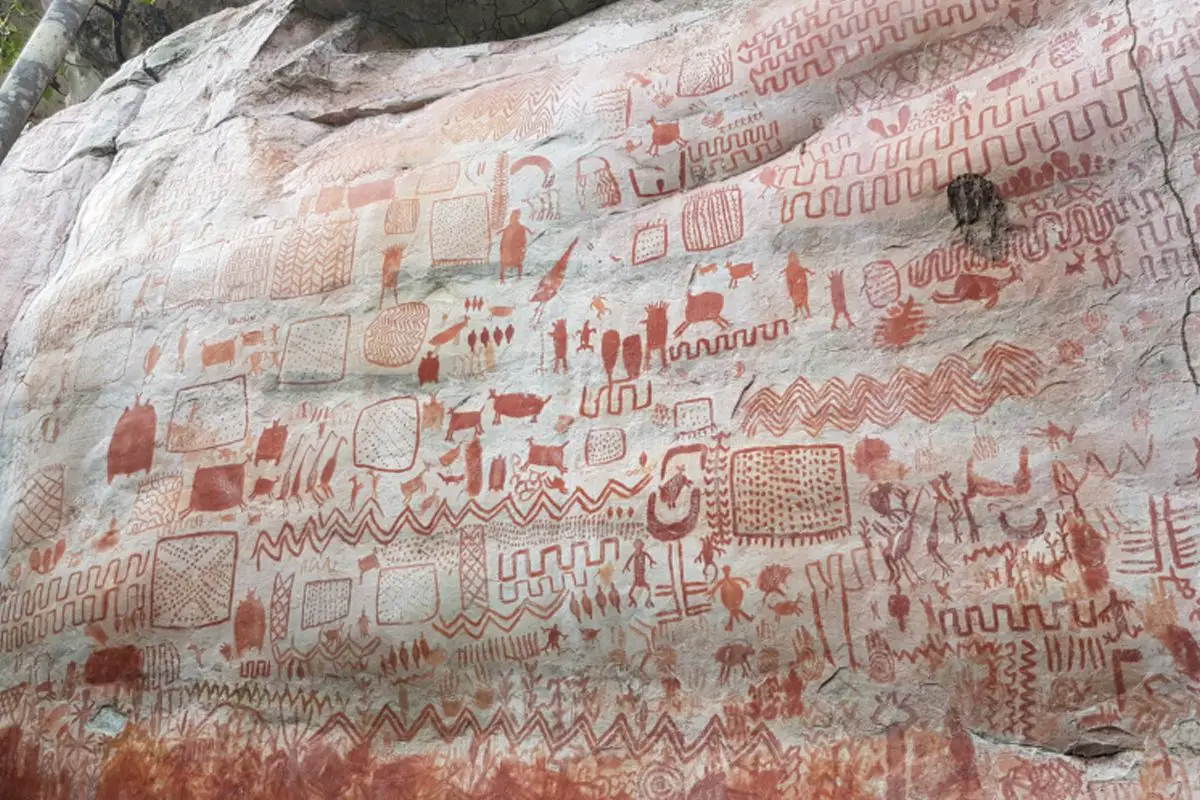
Image Credit : University of Exeter
By:
Mark Milligan
Date:
February 7, 2024
Researchers from the University of Exeter have conducted a study of the shallow cave homes in the Amazon Basin.
The study focused on rock shelters in northwest Colombia, which were occupied by some of the earliest people to migrate to South America during the late Pleistocene era approx. 13,000-years-ago.
The study, part of the €2.5m European Research Council funded LASTJOURNEY project has provided new insights into the colonisation of the Amazon interior and the types domestic and ritual activity at cave shelter sites. The cave inhabitants painted vibrant artworks on the cave galleries using ochre they prepared from a mixture of ferric oxide and varying amounts of clay and sand. They also fashioned stone tools, managed plant resources, and hunted a wide range of Amazonian animals.
“The ‘peopling’ of South America represents one of the great migrations of human history – but their arrival into the Amazon biome has been little understood,” says Mark Robinson, Associate Professor of Archaeology at the University of Exeter.
“For researchers working in the field, dense rainforest makes it challenging to identify potential fieldwork sites, and acidic, clay-based soils impair the preservation of organic remains. Our recent excavations, however, help to fill this gap, not only dating their arrival to much earlier than previously understood, but also providing novel insights into their lives and historical trajectories during the Holocene,” added Professor Robinson.
The study, published in the Quaternary Science Reviews, focused on two rock shelters in the Serranía La Lindosa region on the fringes of the Amazon and Orinoco basins.
The UE team excavated soil sediments from within the shelters and the area directly outside, which were subjected to a geochemical and stratigraphic analysis. The analysis revealed traces of stone fragments, charcoal, and organic matter, indicating food preparation, consumption and disposal, in addition to periods of abandonment over more than a millennia. Moreover, the presence of ceramics dating back approximately 3,000 years, signs of soil cultivation from 2,500 years ago, and remnants of maize cultivation 500 years ago have all been unearthed.
More:
https://www.heritagedaily.com/2024/02/ue-archaeologists-conduct-study-of-amazonian-cave-homes/150474
Ecuadorean councilwoman shot dead Friday
Friday, February 9th 2024 - 10:52 UTC
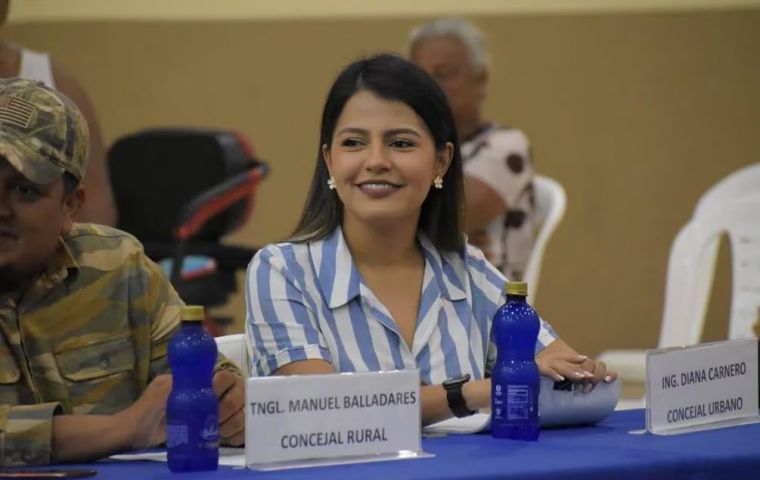
Ecuador's so-called “internal armed conflict” added a victim to its list of fatalities late Wednesday when 29-year-old Councilwoman Diana Carnero from the coastal municipality of Naranjal was shot dead in what is believed to be a murder-for-hire case.
As per President Daniel Noboa's latest decisions, the Armed Forces have been empowered to assist law enforcement agencies in controlling the cities where on some occasions drug-trafficking gangs reign supreme.
Carnero was gunned down in the middle of a street in the Corona 2 sector of Naranjal, a municipality in the coastal province of Guayas, whose capital is Guayaquil. According to Vistazo magazine, the councilwoman, from the Citizen Revolution movement, led by former president Rafael Correa (2007-2017), died in a health center in Naranjal, where she was rushed after the attack.
. . .
Cantero thus joined the list of prosecutors, judges, and politicians to be murdered, such as Manta Mayor Agustin Intriago, or presidential candidate Fernando Villavicencio.
More:
https://en.mercopress.com/2024/02/09/ecuadorean-councilwoman-shot-dead
Profile Information
Member since: 2002Number of posts: 160,516